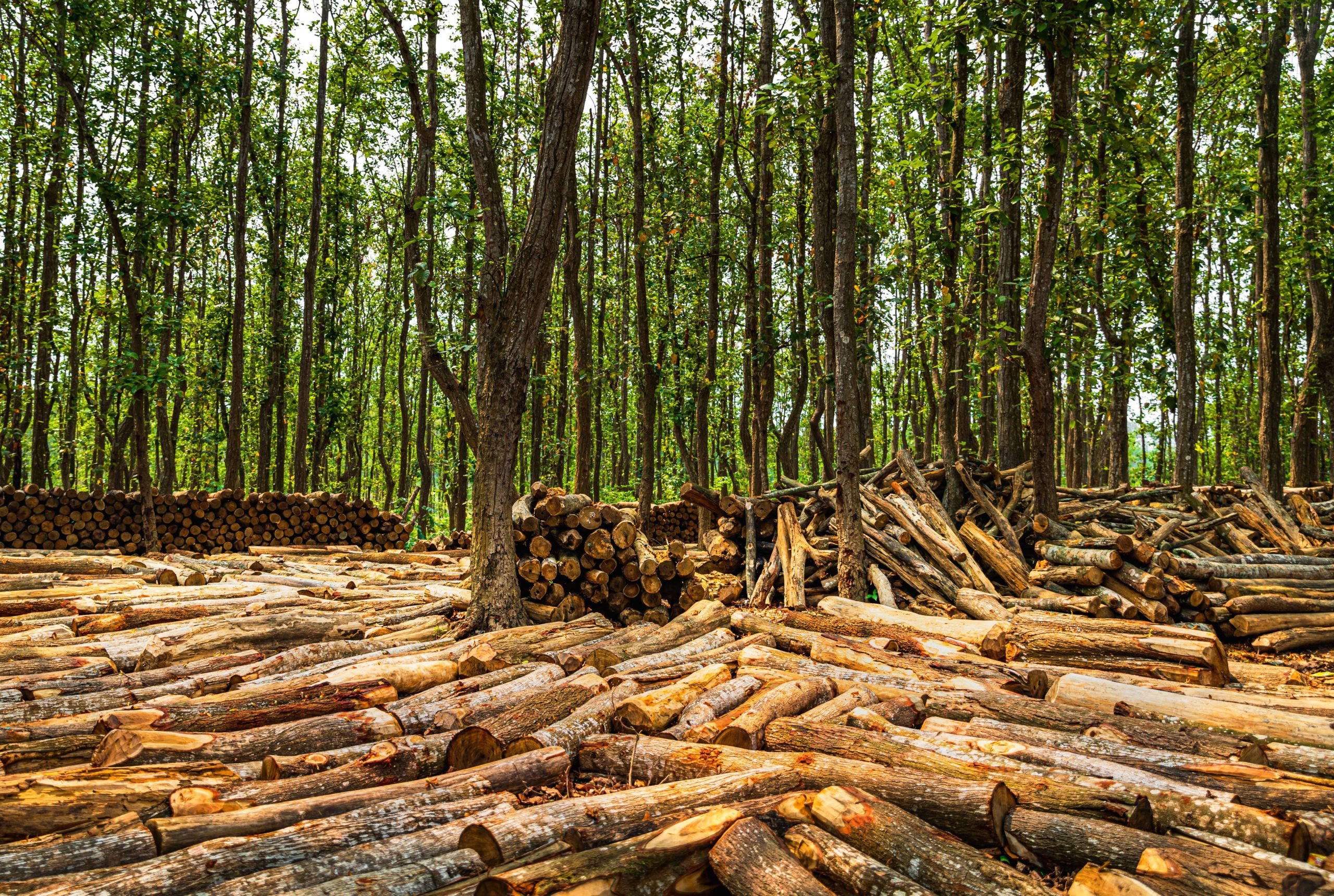
Spotted deer in the Sundarbans, the largest mangrove forest in the world and a UNESCO World Heritage site, in Bangladesh (Image: Muhammad Mostafigur Rahman / Alamy)
Bangladesh, home to the largest mangrove forest in the world, is on the cusp of passing two new laws that will rewrite the rules for how forest resources are used and conserved.
The laws, which will likely be passed during the next session of Parliament starting in June, have been described as a “paradigm shift”. Instead of exploiting forest resources, officials will be bound to protect rapidly depleting green cover in a country with a growing population and burgeoning economic activity in forest land.
The Forest Bill, 2023 is set to replace the Forest Act, 1927, a colonial-era legislation that largely treats forests as a source of revenue for the government. It allows the Forest Department to auction timber and issue permits for extracting fish, fruit, honey, timber from the Sundarbans – a reserve forest and one of the last strongholds of the endangered Bengal tiger.
A second proposed law, the Forest Conservation Bill, 2023, will ban the cutting of trees even outside forests.
“Once passed, the two laws would bring a drastic change in protecting and preserving forests, trees and rich biodiversity. It will be a total paradigm shift in the forest sector of Bangladesh,” Mohammad Shahab Uddin, minister of environment, forest and climate change, told The Third Pole.
He explained why two different laws are needed. “The proposed Forest Bill would authorise the forest officials to conserve the forest and protect biodiversity in the forest as declared by the government. But there are woods, gardens and greenery outside forest land. People can freely cut trees from there so they need to be protected.”
Reforming a law with ‘contradictions’
“Globally, forests are no longer regarded as a source of government revenue,” said Saber Hossain Chowdhury, a member of the ruling party and the chair of the parliamentary standing committee on the Ministry of Environment, Forest and Climate Change.
“Given Bangladesh’s vulnerability to climate change, we must change our focus from revenue generation to conservation. We back the government to make the forest laws conservation-focused,” he said.
Mohammad Abdul Quddus, a senior adviser at Arannayk Foundation, a non-profit organisation working to protect Bangladesh’s forests, said the proposed laws have some good provisions.
“These provisions would protect the forest, biodiversity and forest ecosystem,” Quddus said.
Ishtiaq Uddin Ahmad, a former chief of Bangladesh’s Forest Department and ex-country director of the International Union for Conservation of Nature’s Bangladesh chapter, highlighted how since British colonialism the Forest Department has served to mobilise revenue for the government.
“Every year, the government sets specific targets for the Forest Department to generate revenue by issuing permits to local forest-dependent people such as fishers and honey collectors. [The government] auctioned confiscated timber and other valuable items,” he said.
“I would not term the Forest Act, 1927 a bad law. But it has contradictions: the Forest Department officials are tasked to generate revenue for the government on one hand and conserve forests on the other. It’s hard to strike a balance between the two contradictory duties,” said Ahmad, who has also served as chief conservator of forests.
He described how there were instances when lower revenue generated by the forest division “came under censure from the top forest officials”.
“We tried to persuade the government that revenue generation and conservation of forest cannot go together,” said Ahmad, adding that he would be “extremely happy” if the government shifted focus from revenue generation to conservation by amending the current law.
Colonial roots of forest legislation in Bangladesh
Since the reign of the Mughal empire in the 16th century, under which swathes of forest was converted into cultivable land, Bangladesh has been losing forest cover. In the mid-1850s, the railway network was built, for which big trees were cut indiscriminately to make railway sleepers. Building boats and ships for transportation on the inland waterways network also heavily depleted forests.
“A naval chief of British India drew the attention of the government to protect the forest as the felling of trees would ultimately exhaust the resources for making ships,” Laskar Muqsudur Rahman, a forest law researcher and former forest official, told The Third Pole.
In response, the British government promulgated the first forest law in 1865, a year after the creation of the Forest Department. In 1878, they enacted a comprehensive Indian Forest Act, which contained the provision of revenue generation from the forests.
Nearly 50 years later, the colonial government enacted the Forest Act, 1927. In 1971, Bangladesh emerged as an independent country seceding from Pakistan. The Forest Department assumed responsibility for protecting the forests and its biodiversity.
Though the Forest Department continued to protect some reserved forest where human entrance is not allowed, the overall destruction of forests continued.
In 2002, researcher Mohammad Millat-e-Mustafa wrote that during the 1980s 8,000 hectares of forest were lost every year. He was referring to a USAID-CIDA survey that suggested that “50% of Bangladesh’s forests had been destroyed within the last 20 years”.
Last year, the Arannayk Foundation conducted a study on the Reinkhyong reserve forest, which covers 30% of the Chittagong Hill Tracts and is one of five reserve forests in Bangladesh.
The study found that nearly 60% of the trees inside the reserve forest have been lost, with no difference detected between the reserve forest and the forest outside the reserve.
New laws are only as good as their application
Ishtiaq Ahmad said the proposed laws are a step in the right direction. “The greatest advantage the new laws will bring is that forest officials will no longer be under pressure from the government to think of generating revenues from the forest. It will have a remarkably positive impact on the psychology of the officials,” said Ahmad.
Farid Uddin Ahmed, a former executive director of the Arannayk Foundation, said the proposed laws would not jeopardise the livelihoods of local people, who are the real protectors of the forests and environment.
“Our experience shows that the local people do not destroy forests as it involves their survival. Their interests must be guaranteed. The people collecting honey, fish, golpata [nipa palm] and other items from the Sundarbans must be given the chance to continue but in a sustainable way,” he said.
Researcher Rahman, however, highlighted an important challenge for the government. “With regard to conserving the forest, sincere and unbiased application of the law is more important than framing a new law. The new laws will not help conserve the forest if they are not applied properly,” he said.



